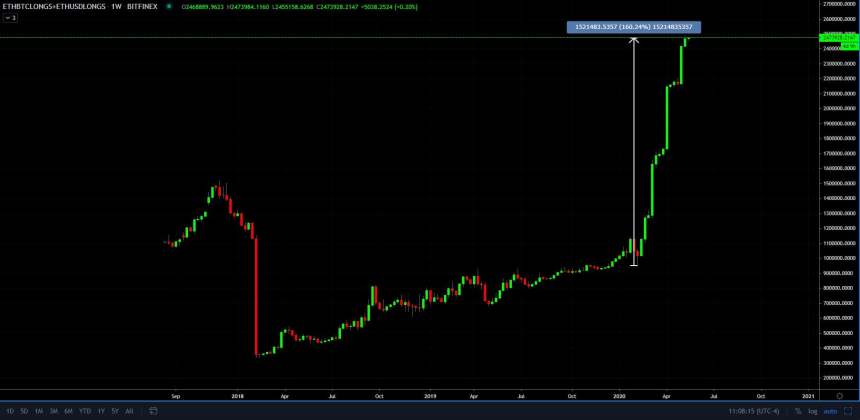Analysts are now noting that the fee burn in ETH 2.0 could also lead the cryptocurrency to see negative annual issuance – which would be extremely bullish for its underlying token fundamentals.
It appears that investors are taking notice of this possibility.Ethereum 2.0 Could Lead the Crypto to See Negative Issuance
It is widely thought that Ethereum 2.0’s testnet will be launched in July, with this being the first step towards the crypto’s lengthy transition.
Among many other things, one factor that is expected to help drive investors to ETH is its new staking mechanism, which allows individuals to run network validator nodes in exchange for staking rewards.
ETH 2.0 is also anticipated to significantly reduce Ethereum’s annual issuance, with some market participants even noting that it could eventually go negative.“Over the past week, the Ethereum network has generated ~1900 ETH in fees a day, or ~700k ETH annualized. At 10mn ETH staked in PoS, the network will produce ~575k ETH a year. With fee burn in eth2, it’s very likely that we will eventually get to negative annual issuance,” one developer noted.
Over the past week, the Ethereum network has generated ~1900 ETH in fees a day, or ~700k ETH annualized. At 10mn ETH staked in PoS, the network will produce ~575k ETH a year. With fee burn in eth2, it's very likely that we will eventually get to negative annual issuance. — eric.eth (@econoar)David Hoffman, however, explained that he isn’t convinced that this will happen.
“I’m actually less convinced of going negative. More ETH burn should increase ETH staking returns. More ETH staking increases issuance. I don’t know where the equilibrium sets but I’m not convinced that it’s at a negative number,” he explained.
I’m actually less convinced of going negative. More ETH burn should increase ETH staking returns. More ETH staking increases issuance. I don’t know where the equilibrium sets but I’m not convinced that it’s at a negative number — DavidHoffman.eth/acc🦇🔊 (@TrustlessState)
Investors Seem to Be Taking Notice of Imminent ETH 2.0 Launch
If Ethereum’s annual issuance does go negative eventually, it would make the cryptocurrency a deflationary asset. Couple this with the heightened scalability and PoS staking brought about by ETH 2.0, and it does appear that the crypto could be poised to see notable upside. Traders are taking notice – the number of Ethereum long positions on Bitfinex have rocketed in recent times.“2.2% of all ETH in existence is now margin long on Bitfinex, an increase of ~160% since February,” one trader .

Featured image from Shutterstock.












